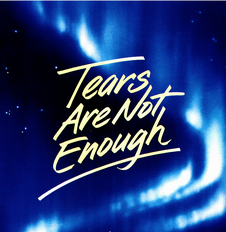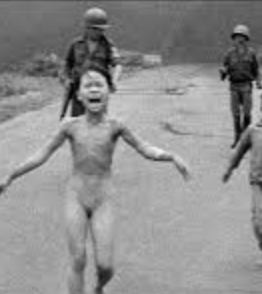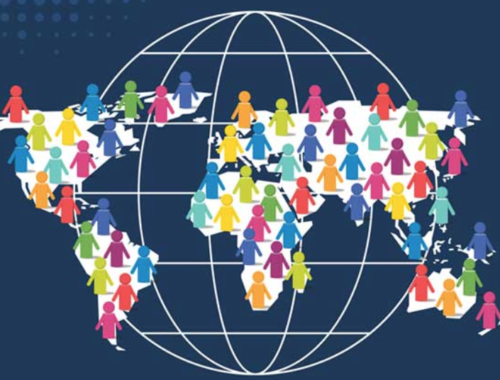The Amazing Power of an Image and a Story
THERE IS MORE GOOD NEWS IN THE WORLD THAN BAD
Several weeks ago Pat and I were watching a CBC interview between Adrienne Arsenault and former CBC foreign journalist, Brian Stewart.

Brian has just written a book about his days as a foreign correspondent called, ¨ON THE GROUND.¨
A large part of the interview was about Brian and his CBC team breaking the story to the world about the horrible famine in Ethiopia in 1984.
The CBC had been tipped off that something big was happening in Northern Ethiopia (Tigray and Eritrea, then a part of Ethiopia) but the media was not allowed to go there. Eventually they were allowed in. What they found was one of the most horrific humanitarian disasters the world has ever seen.
They found a famine that could potentially kill up to 6 million of the world’s most vulnerable people out of an estimated population of 44 million.
Says Stewart in his book, “True famines are rare, arising not just from drought and harvest failures, but from the combination of major calamities in severely misgoverned lands and involve failed rains, insect infestations, soil overuse, environmental collapse.extreme poverty and some form of war. When such a famine occurs oppressive governments not only try to hide it but may collude in promoting it to curb the growth of troublesome populations.”
This part of Ethiopia had it all. The result was 100s of thousands of starving and disease stricken people, emaciated men, gaunt and forlorn-looking women and dying children, trudging 100s of kilometers across barren lands to find food, water, health care and a resting spot…a refugee camp.
You might ask why would you write a GOOD NEWS blog about such horrible things. Because I believe many times out of bad comes good and because of Stewart and his team bringing this to the attention of people all over the world, people were mobilized to take action.
In fact, Stewart and his CBC team, (Tony Burman producer, Phillipe Billard, camera man and technician, John Axelson) were the first to communicate this calamity to much of the world. This was not an easy thing to do from a remote place in the world with no nearby communication facilities. Newly created satellites eventually made this possible.
Many humans ignored what was happening in Ethiopia, but many people responded.
One person and his wife who responded to this overwhelming and devastating calamity was
Irish rock star Bob Geldof , and his wife, Paula Yates. He (they) mobilized musicians around the world to perform in international concerts like WE ARE THE WORLD and Live Aid. The Geldof’s and others were helped by the BBC who connected the whole world together electronically so they could watch the rock stars at the same time. On one day approximately 1.9 billion people (about 40% of the world’s population at that time), watched these rock groups perform and raise money to provide food, water and health care for these starving people.
The video that was produced by the CBC team set the tone and overpowering background story, not only for these concerts, but also for 100s of other events as well.
I wrote a blog on this happening called THE POWER OF ONE and later a chapter in my book, ¨52+ Good News Stories (What One Person Can Do),” about what GELDOF had spearheaded.
Bob Geldof was the One.
In the blog I made a small statement that the news of this disaster had been brought to the world’s attention by Stewart and his CBC team. Their video was what initially motivated Geldof and others.

While listening to the very personal and compelling interview between Brian and Arsenault, (Arsenault, too, had served as a foreign correspondent), I concluded not to take away from what Geldof had done, but the real initiator and the Power of One was Stewart and his team.
While the musicians reacted and made an enormous impact, the video produced started it all and had amazing responses all over the world, including Canada.
The morning after the videos first showing, Canada’s Prime Minister, Brian Mulroney, who had been in tears along with the rest of his family watching the story, called Stephen Lewis, the Canadian ambassador at the U.N., who in turn brought the disaster to the attention of The General Assembly. Lewis is a communicator extraordinaire and the story started to make its way around the world.
Former Prime Minister and then Minister of Foreign Affairs, Joe Clark, known for taking action, became very involved and with enormous effect as did David MacDonald, a Conservative cabinet minister. Some will argue this was one of Canada’s golden moments on the world stage.
In his book, Brian Stewart paints many moving examples of the humanity that came out of this famine. They include:
The wonderful compassion and care of the Sisters of Charity.
NGOs, including Oxfam, CARE, the Red Cross and Doctors Without Borders, sprung into action.

Many who watched the video were sobbing and in tears afterwards. Their hearts and souls were torn open by what they saw. Many had to do something. Some quit their jobs to go to Ethiopia to help, others volunteered to do what they could at home, they organized fund raisers, some sent money, some just talked to others about it. Many changed careers to do something more meaningful. They knew that the words from the Canadian song, “TEARS ARE NOT ENOUGH,” were true.
They had changed…not just now, but for some, forever.
For some these images continue to appear whenever they witness greed or opulence and feel sick. Others feel guilty they have so much and these people had nothing. These images were a reminder of the inequity and injustice in the world.
The CBC video, as well as later stories, communicated other things too…the resilience of the people and drive to survive. How could these people with no food, walk in such pain and seemingly little hope for so long?
The display of care for others in such circumstances was both moving and haunting
Brian tells the story of meeting a dying 3 year old little girl called Birhan. As she was being carried to the clinic, the Sisters told him she had about 15 minutes to live. All Brian could think of was hoping this little girl would die in dignity. Returning to the clinic later, they discovered she had survived. Amazingly, 10 days later she continued her journey with her family
Brian kept in touch with Birhan, sometimes sending money for education. Not only was she the first person in her family to go to school, but also eventually obtained degrees in agriculture and nursing, married and had several children.
This connection brought her to Canada and Niagara Falls. While in Canada, what she wanted the most was just to return home and back to her classes.
Brian depicts the power of love and drive of Birhan’s father and others to ensure the survival of their families.
Not to be forgotten was the determination, perseverance, and physical and emotional cost to produce and bring this story to the world by the CBC team.

The whole story reinforces the power and importance of images in communicating a story. You may recall the impact of the picture of the terror on the face of Kim Phuc, the 9 year old little Vietnamese girl after being severely burned from napalm,* and more recently of 2 year old Syrian refugee, Alan Kurdi lying dead on a beach in Turkey. Both of these images spurred an uproar and positive action around the world.
The book is Brian’s memoir and includes not only stories about his career but also a reminder of some of the events from 1955 onwards. The life of a journalist is fraught with danger. We must be thankful for the risks they take and stories they tell which we can use to make the world a better place.
Brian and the CBC team were the POWER OF ONE who brought the story to the world and mobilized the world to take action. As a result, while far from being a Utopia, millions of people lived and had fulfilling lives. The original estimate was that up to 6 million could die. The end result was between 400,000 and 1 million.
Northern Ethiopia is still an inhospitable place to live. People have learned how to live in these conditions.

At the start of the interview Arsenault asked, “Where would you like to go to report?¨
He replied without any hesitation, “Gaza.¨
Gaza too, is a world problem (and needs the world to help solve it).
In closing, I would ask you to consider doing one or more of the following:
1) Watch the footage of the CBC Ethiopian video https://www.cbc.ca/player/play/video/1.3627874
2) Watch Adrienne Arsenault’s interview on youtube – Warning – contains disturbing images – https://www.youtube.com/watch?v=XgehrcCXiO8
3) For more on Live Aid read either my blog, ¨The Power of One,¨ https://chrissnyder.makeanimpact.ca/2024/03/ or the chapter, ¨What One Person can do,” from my book, ¨52 + Good News Stories.¨ which can be purchased from: https://hilborn-civilsectorpress.com/products/52-good-news-stories
4) Read Brian’s book, ¨ON THE GROUND.¨ https://www.indigo.ca/en-ca/on-the-ground-my-life-as-a-foreign-correspondent/9781668052150.html
5) Reflect on and ask yourself if there are any more takeaways from this amazing BAD NEWS/GOOD NEWS story about the Power of an IMAGE and a STORY.
Till next time,
Chris Snyder, climate optimist
Email: snyderchris74@gmail.com
Stories of Good News and Hope: https://chrissnyder.makeanimpact.ca
* It is called the photo that stopped the Vietnam war
The Good News About Personal Contact
You May Also Like

Cambodia!
January 13, 2019
Getting Along and the Golden Rule
July 31, 2022